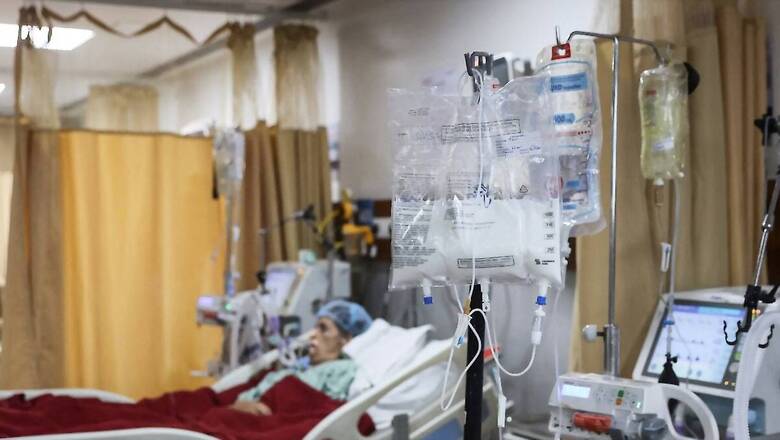
views
Intensive care units (ICU) have been hotbeds of common infections like pneumonia, urinary tract infections (UTI), bloodstream infections that often become serious because most drugs in our arsenal fail to kill them. Researchers scoured through hundreds of research papers from the MedLine PubMed repository from 2010 to 2020 that documented cases of six of these most common drug-resistant bacteria, also referred to as ESKAPE. They are on the WHO’s list of high-priority pathogens globally.
The findings are consonant with the latest Antimicrobial Surveillance Report of the Indian Council of Medical Research (ICMR) released last year, which also raised an alarm over the high prevalence of drug resistance in ICUs. The report stressed that urgent infection control practices in hospitals should be a “top priority”.
“This is one of the biggest health crises of the 21st century,” said senior microbiologist and lead author Prof Arun S Kharat from Jawaharlal Nehru University (JNU) in New Delhi.
When currently available drugs fail…
The analysis, published in the peer-reviewed International Journal of Antimicrobial Agents, shows that there has been a considerable increase in resistance to various classes of antibiotics in India. This was particularly notable especially for a highly problematic bacterium called Acinetobacter baumannii, as well as Klebsiella pneumoniae that have become harder to treat.
In fact, the 2022 ICMR report, which covered 39 hospitals part of the antimicrobial resistance (AMR) network across India, also found a high rate of resistance in K. pneumoniae and A. baumannii against third-generation drugs.
According to the report, the resistance to carbapenems – drugs used to treat severe bacterial infections – was recorded at 88 per cent in A. baumannii. This is extremely worrying considering these bacteria are responsible for a majority of the bloodstream infections in Indian ICUs.
The ICUs are clearly hotbeds of AMR infections and patients, who are subjected to longer stays, remain the most susceptible. “Patients are hospitalised for a certain ailment, but they end up acquiring new infections during their stay. These can be lung infections, bloodstream infections or UTIs, which can often be life-threatening. That is also the reason why patients recovering at home during Covid had better chances of survival than those in hospitals,” said Kharat.
High and indiscriminate use of antibiotics
As in other regions of the world, India presently uses many and large doses of antibiotics that has worsened the crisis. A latest survey conducted in 2021 showed that a large percentage of the population in India is still taking antibiotics even for sore throat, headache, and body pain, as well as skin and wound infections.
Of these symptoms, sore throat can be due to bacterial infection, allergic reaction, or a viral infection, but headache, body pain, and some of the skin ailments are not necessarily bacterial. Not only this, a large percentage of respondents also did not complete the antibiotics regimen and prematurely discontinued treatment when they noticed some improvement in their health.
“The crisis has worsened, because for the most part, these antibiotics are increasingly prescribed on an experimental basis without precise knowledge of the agents that caused it. India is one of the most populous countries and it urgently needs to focus on healthcare measures to control the spread of antimicrobial resistance; this will avoid extensive suffering and mass succumbing to infections, which used to be successfully cured,” Kharat added.



















Comments
0 comment